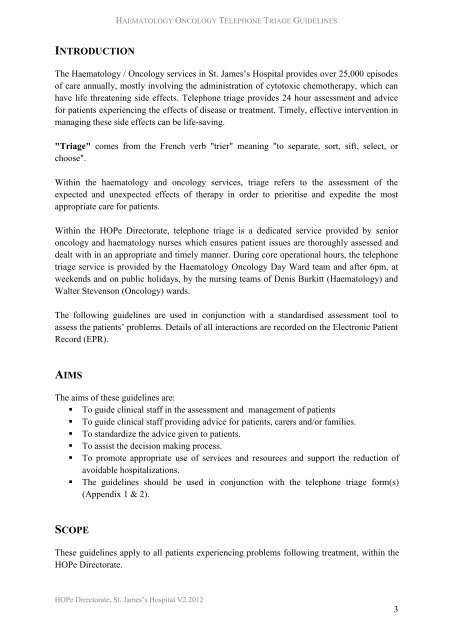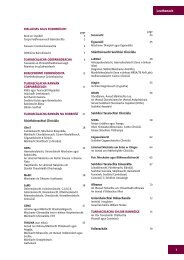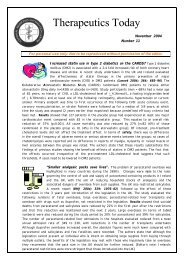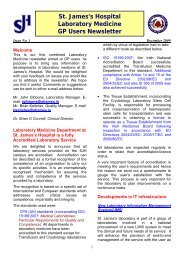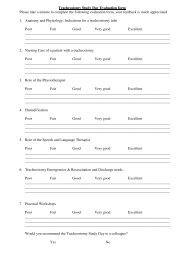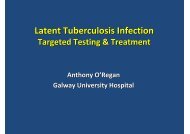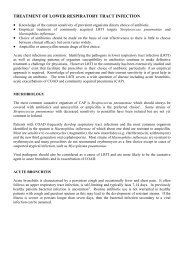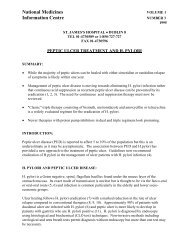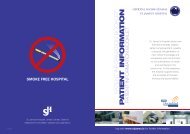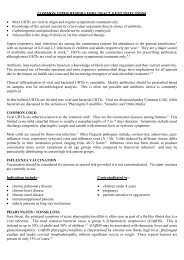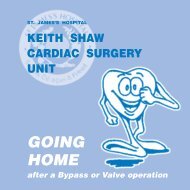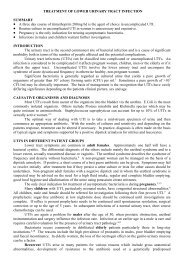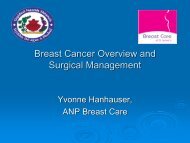Telephone Triage Guidelines - St. James's Hospital
Telephone Triage Guidelines - St. James's Hospital
Telephone Triage Guidelines - St. James's Hospital
You also want an ePaper? Increase the reach of your titles
YUMPU automatically turns print PDFs into web optimized ePapers that Google loves.
HAEMATOLOGY ONCOLOGY TELEPHONE TRIAGE GUIDELINESINTRODUCTIONThe Haematology / Oncology services in <strong>St</strong>. James‟s <strong>Hospital</strong> provides over 25,000 episodesof care annually, mostly involving the administration of cytotoxic chemotherapy, which canhave life threatening side effects. <strong>Telephone</strong> triage provides 24 hour assessment and advicefor patients experiencing the effects of disease or treatment. Timely, effective intervention inmanaging these side effects can be life-saving."<strong>Triage</strong>" comes from the French verb "trier" meaning "to separate, sort, sift, select, orchoose".Within the haematology and oncology services, triage refers to the assessment of theexpected and unexpected effects of therapy in order to prioritise and expedite the mostappropriate care for patients.Within the HOPe Directorate, telephone triage is a dedicated service provided by senioroncology and haematology nurses which ensures patient issues are thoroughly assessed anddealt with in an appropriate and timely manner. During core operational hours, the telephonetriage service is provided by the Haematology Oncology Day Ward team and after 6pm, atweekends and on public holidays, by the nursing teams of Denis Burkitt (Haematology) andWalter <strong>St</strong>evenson (Oncology) wards.The following guidelines are used in conjunction with a standardised assessment tool toassess the patients‟ problems. Details of all interactions are recorded on the Electronic PatientRecord (EPR).AIMSThe aims of these guidelines are:• To guide clinical staff in the assessment and management of patients• To guide clinical staff providing advice for patients, carers and/or families.• To standardize the advice given to patients.• To assist the decision making process.• To promote appropriate use of services and resources and support the reduction ofavoidable hospitalizations.• The guidelines should be used in conjunction with the telephone triage form(s)(Appendix 1 & 2).SCOPEThese guidelines apply to all patients experiencing problems following treatment, within theHOPe Directorate.HOPe Directorate, <strong>St</strong>. James‟s <strong>Hospital</strong> V2 20123


